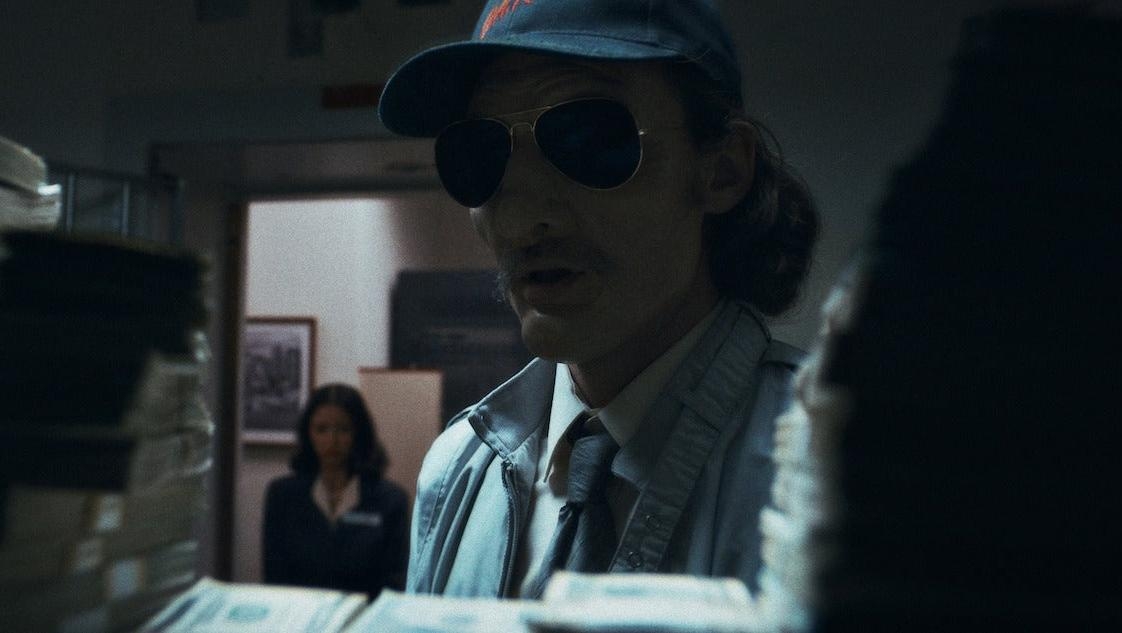How To Rob A Bank review: “Hollywood” thief gets Hollywood doc treatment
Outlaw Scott Scurlock can still seduce audiences and filmmakers years after his death
Film Reviews Butch Cassidy
Spoiler alert: How To Rob A Bank is not going to teach you how to make off with millions from a local financial institution. It is, however, a more compact, marketable title than How This One Dude Robbed A Bunch Of Banks For As Long As He Could, and calculates that the 2007 Nick Stahl comedy heist flick of the same name doesn’t have a particularly rabid fan base to confuse the two in anyone’s mind. It’s a true-life tale from early ‘90s Seattle, one that mostly does not involve the famous music scene, but stems from similar impulses. From a certain point of view, a charismatic fellow who disliked the corporate influx of dot-com start-ups and mega-chains could either pick up a guitar and rage against the machine…or pick up a gun and decide to hit them in the pocketbook.
Not that Scott Scurlock was as noble as he may have framed himself. As seen on a treasure trove of home video footage, Scurlock was one of those spontaneous, hedonistic thrill-seeker types who lived for the moment and off the grid, a nudist frequently showcasing his perfectly chiseled physique and movie-star eyes. He’s the kind of guy that gets all the girls in his 20s, then loses them all in his 40s when it becomes clear that having no long-term plan isn’t sexy forever. Being a modern-day Robin Hood might have sounded fun to say, but it was also perhaps an inevitable outgrowth of ruining his promising pre-med college career by dealing the purest crystal meth in town. Imagine a younger Walter White with no cancer, who simply broke bad with his chemistry skills for the adrenaline rush.
Inspired by movies, Scurlock put his considerable intellect towards bank robbery, where his clearly researched patterns and prosthetic makeup earned him the nickname “Hollywood.” It is in that spirit that directors Stephen Robert Morse (In The Cold Dark Night) and Seth Porges (Class Action Park) appropriately deliver a cinematically slick documentary in his name. Directors of photography Jacob Sacks Jones and Domenic Barbero light and film subjects in their home environments to look like a multimillion dollar production. The FBI offices and homes where we see the real survivors have major studio set vibes, while dramatic recreations of the robberies (shot by Michael Wale) give them the movie treatment Scurlock no doubt imagined he’d receive one day. Where visuals of certain events are unavailable, like Scurlock writing in his journal at night, fully colored and animated storyboards fill in the gaps.
It’s an odd semi-glorification, even as How To Rob A Bank throws in a few token mentions of robbery survivors with PTSD at the end, and offers a sense that Scurlock fell into the Butch Cassidy trap of being so hooked on robberies he never knew when to quit. Indeed, for a guy who studied heist movies so well to learn their tricks, he couldn’t take in the biggest cliché of all: That “one last job” is more likely to bite you in the ass than provide a lifetime retirement.
The notion of a Robin Hood figure still seems appealing, and certainly would have been to the handful of friends who attest that Scurlock helped out with generous donations. If there were victims aside from a handful of bystanders traumatized by gunpoint robbery, and the future potential of same, How To Rob A Bank isn’t especially interested in them. Scurlock planned his crimes well, and his finances terribly, burning through his gains both as charity to his buddies and his primary source of income. One might assume the banks were insured, but someone had to lose all that cash.
We don’t really know, though, and that may be attributable to Scurlock’s distracting charm, even through VHS tapes of three decades ago. If he can dazzle the filmmakers who have direct access to the law enforcement agents who were on his tail, he can certainly charm other viewers. He’d probably have been extremely happy to be immortalized in a film like this one, and the dramatic one sure to follow. (Actors watching How To Rob A Bank are likely to be just as enamored of its central figure.)
If there’s a lesson for latter-day would-be Scurlocks, it’s that getting locked into even the anti-career “career track” of bank robber seemed to become as much of a prison, by the end, as any other corporate paycheck job might have been. He clearly didn’t have the patience to take a long time earning credentials for high-paying jobs, and even in his elaborate, self-made treehouse, he depended on more income than simpler jobs could provide, to the point that the FBI started to predict when he’d run out of money each month and need to rob again. The ultimate nonconformist, even while breaking all the rules, still found himself beholden to routine. As a story in a book, or newspaper, it might read as a pointless fate.
As the directors well know, though, when you put Scott Scurlock on the screen, he sure seems convincing. Scurlock was probably high on more than just life, but whenever he shows up, he seems to be living a fun one. His journals, and savvier friends, offer glimpses of a counter-narrative, but is it a bit late for that? Despite the ultimate end of his journey, a viewer may well come away wondering if they’d rather root for the still-bickering FBI guys pointing fingers at which of them screwed things up the most, or the sexy wild child who lived dangerously and burned out rather than fading away. As in so many James Cagney gangster movies constrained by the Hays production code, any last-minute moralizing feels like a mandated afterthought to abruptly balance the scales.